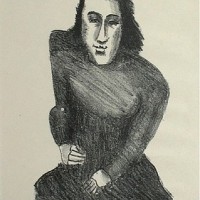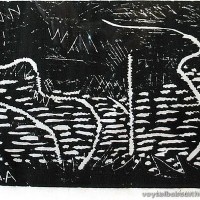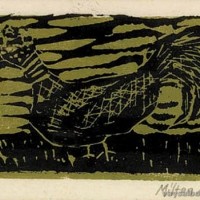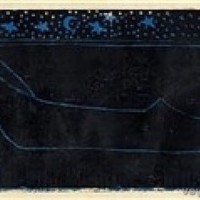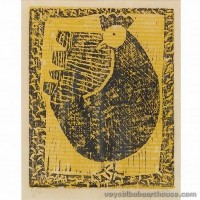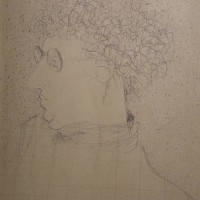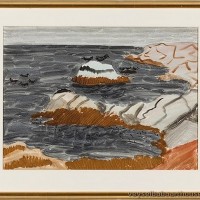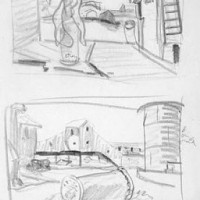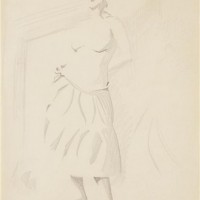- Home
- ABOUT US
- ABOUT VEYSEL BABA
- REDFOX ART HOUSE VIRTUAL TOUR
- MY LAST WILL TESTAMENT
- NOTES ON HUMANITY AND LIFE
- HUMAN BEING IS LIKE A PUZZLE WITH CONTRADICTIONS
- I HAVE A WISH ON BEHALF OF THE HUMANITY
- WE ARE VERY EXHAUSTED AS THE DOOMSDAY IS CLOSER
- NO ROAD IS LONG WITH GOOD COMPANY
- THE ROAD TO A FRIENDS HOUSE IS NEVER LONG
- MY DREAMS 1
- MY DREAMS 2
- GOLDEN WORDS ABOUT POLITICS
- GOLDEN WORDS ABOUT LOVE
- GOLDEN WORDS ABOUT LIFE
- GOLDEN WORDS ABOUT DEATH
- VEYSEL BABA ART WORKS
- SHOREDITCH PARK STORIES
- EXAMPLE LIVES
- ART GALLERY
- BOOK GALLERY
- MUSIC GALLERY
- MOVIE GALLERY
- Featured Article
- Home
- ART GALLERY
- Milton Avery
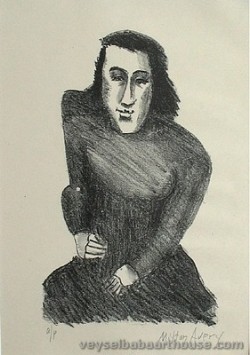
Milton Avery
Milton Clark Avery (March 7, 1885 [1] – January 3, 1965[2] ) was an American modern painter. Born in Altmar, New York, he moved to Connecticut in 1898 and later to New York City.
Biography
The son of a tanner, Avery began working at a local factory at the age of 16 and supported himself for decades with a succession of blue-collar jobs. The death of his brother-in-law in 1915 left Avery, as the sole remaining adult male in his household, responsible for the support of nine female relatives.[3] His interest in art led him to attend classes at the Connecticut League of Art Students in Hartford, and over a period of years, he painted in obscurity while receiving a conservative art education.[3] In 1917, he began working night jobs in order to paint in the daytime.
In 1924, he met Sally Michel, a young art student, and in 1926, they married. Her income as an illustrator enabled him to devote himself more fully to painting. The two had a daughter, March Avery, in 1932. For several years in the late 1920s through the late 1930s, Avery practiced painting and drawing at the Art Students League of New York. Roy Neuberger saw his work and thought he deserved recognition. Determined to get the world to know and respect Avery's work, Neuberger bought over 100 of his paintings, starting with Gaspé Landscape, and lent or donated them to museums all over the world. With the work of Milton Avery rotating through high-profile museums, he came to be a highly respected and successful painter.
In the 1930s, he was befriended by Adolph Gottlieb and Mark Rothko among many other artists living in New York City in the 1930s–40s.[4] It was Rothko who wrote perhaps the most vivid summation of Avery's art, quoted below.
The Phillips Collection in Washington, D.C., was the first museum to purchase one of Avery's paintings in 1929; that museum also gave him his first solo museum exhibition in 1944.[5] He was elected a Fellow of the American Academy of Arts and Sciences in 1963.[6]
Avery was a man of few words. "Why talk when you can paint?" he often quipped to his wife. Their daughter, March Avery, is also a painter.
He died at Montefiore Hospital in the Bronx, New York after a long illness,[2] and is buried in the Artist's Cemetery in Woodstock, Ulster County, New York. After his death in 1965, his widow, Sally Avery, donated his personal papers to the Archives of American Art, a research center of the Smithsonian Institution. In 2007, the Archives optically scanned these papers and made them available to researchers as the Milton Avery Papers Online.
Style and influence
Avery's work is seminal to American abstract painting—while his work is clearly representational, it focuses on color relations and is not concerned with creating the illusion of depth as most conventional Western painting since the Renaissance has. Avery was often thought of as an American Matisse, especially because of his colorful and innovative landscape paintings. His poetic, bold and creative use of drawing and color set him apart from more conventional painting of his era. Early in his career, his work was considered too radical for being too abstract; when Abstract Expressionism became dominant his work was overlooked, as being too representational.
French Fauvism and German Expressionism influenced the style of Avery's early work, and his paintings from the 1930s are similar to those of Ernst Ludwig Kirchner. By the 1940s, Avery’s painting style had become more similar to Henri Matisse, and his later works use color with great subtlety.[7]
About Avery's art
According to painter Mark Rothko,
What was Avery's repertoire? His living room, Central Park, his wife Sally, his daughter March, the beaches and mountains where they summered; cows, fish heads, the flight of birds; his friends and whatever world strayed through his studio: a domestic, unheroic cast. But from these there have been fashioned great canvases, that far from the casual and transitory implications of the subjects, have always a gripping lyricism, and often achieve the permanence and monumentality of Egypt.[8]
Art critic Hilton Kramer said,
He was, without question, our greatest colorist.... Among his European contemporaries, only Matisse—to whose art he owed much, of course—produced a greater achievement in this respect.[9]
Public collections
- Ackland Art Museum, University of North Carolina at Chapel Hill
- Addison Gallery of American Art, Andover, Mass.
- Albright-Knox Art Gallery, Buffalo, N.Y.
- Binghamton University Art Museum, New York
- Birmingham Museum of Art, Alabama
- Block Museum of Art, Northwestern University, Evansville, Ill.
- Brooklyn Museum of Art, New York City
- Butler Institute of American Art, Youngstown, Ohio
- Cape Ann Museum, Gloucester, Mass.
- Cleveland Museum of Art
- Columbia Museum of Art, South Carolina
- Crystal Bridges Museum of American Art, Bentonville, Ark.
- Davistown Museum, Liberty, Maine [4]
- Dayton Art Institute, Ohio
- Everson Museum of Art, Syracuse, N.Y.
- Fine Arts Museums of San Francisco
- Georgia Museum of Art, Athens
- Charlotte and Philip Hanes Art Gallery, Wake Forest University, Winston-Salem, N.C.
- Samuel P. Harn Museum of Art, University of Florida, Gainesville
- Harvard University Art Museums. Cambridge, Mass.
- Hirshhorn Museum and Sculpture Garden, Washington, D.C.
- Honolulu Museum of Art
- Hunter Museum of American Art, Chattanooga, Tenn.
- Maier Museum of Art, Randolph College, Lynchburg Va.
- Maitland Art Center, Florida
- Memorial Art Gallery of the University of Rochester, New York [10]
- Metropolitan Museum of Art, New York City
- Milwaukee Art Museum
- Minneapolis Institute of Art
- Modern Art Museum of Fort Worth, Texas
- Montana Museum of Art and Culture, Missoula
- Montclair Art Museum, New Jersey
- Museum of Fine Arts, Boston
- Museum of Modern Art, New York City
- National Gallery of Art, Washington, D.C.
- National Gallery of Australia, Canberra
- National Portrait Gallery, Washington, D.C.
- Neuberger Museum of Art, Purchase, N.Y.
- New Britain Museum of American Art, Connecticut
- New Jersey State Museum, Trenton
- Oklahoma City Museum of Art
- Pennsylvania Academy of the Fine Arts, Philadelphia [11]
- Philadelphia Museum of Art
- Phillips Collection, Washington, D.C.
- Portland Art Museum, Oregon
- Reading Public Museum, Pennsylvania
- San Antonio Art League Museum, Texas [12]
- San Diego Museum of Art, California
- Santa Barbara Museum of Art, California
- Sheldon Museum of Art, Lincoln, Neb,
- Smithsonian American Art Museum, Washington, D.C.
- Tate Modern, London, England
- University of Kentucky Art Museum, Lexington
- Vero Beach Museum of Art, Florida
- Wadsworth Atheneum, Hartford, Conn.
- Walker Art Center, Minneapolis
- Westmoreland Museum of American Art, Greensburg, Penn.
- Woodstock Artists Association and Museum, New York
